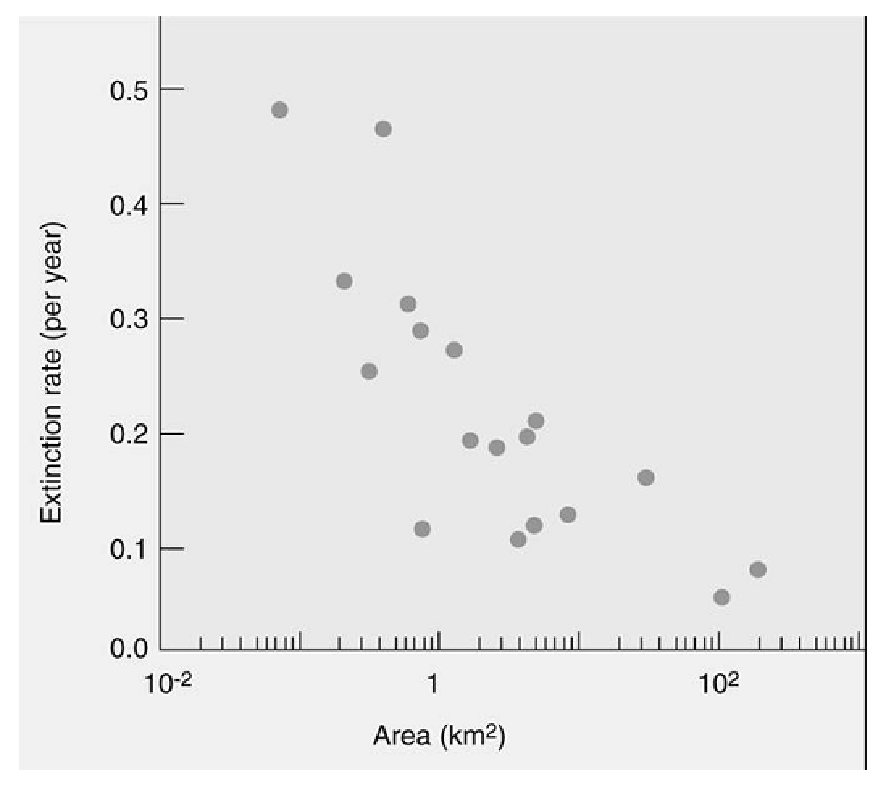Which of the following is an important consequence of the evolution of diatoms and coccolithophorids?
A. They dominated photosynthesis in the
oceans.
B. The silica and calcium carbonate
contained in these organisms became a
primary source of carbonate sediments on
the seafloor.
C. They produced respective "blooms" in the
ocean.
D. They led to the extinction of cyanobacteria.
E. None of these answer options is correct.
B
You might also like to view...
The following graph shows the relationship between extinction and habitat area. Which statements help explain the trend shown on the graph? Check all that apply.

_____ Larger patches are more likely to be encountered by new immigrants.
_____ Larger patches are likely to have a more uniform habitat.
_____ Larger patch size reduces genetic drift.
_____ Larger patches are more geographically isolated than smaller patches.
_____ Species richness is higher on larger patches.
Additional:
Clarify Question
· What is the key concept addressed by the question?
Gather Content
· What do you already know about habitat area and extinction?
Choose Answer
· Given what you now know, what information and/or problem solving approach is most likely to produce the correct answer?
Reflect on Process
· Did your problem-solving process lead you to the correct answer? If not, where did the process break down or lead you astray? How can you revise your approach to produce a more desirable result?
The group of Fungi in which sexual reproduction has not been observed is
A. Ascomycetes. B. Deuteromycetes. C. Zygomycetes. D. Basidiomycetes.
Carotenoids are important to many plants because these pigments are able to
A. capture UV radiation that is harmful to the DNA in the nucleus of plant cells. B. absorb wavelengths of light that neither chlorophyll a nor b can absorb. C. store electrons for use during the "dark" reaction of photosynthesis. D. absorb water so that hydrolysis can be carried out in the chloroplasts. E. remove carbon dioxide from the air.
Which form of speciation is most rapid?
A. sympatric speciation via polyploidy B. sympatric speciation via disruptive selection C. allopatric speciation on the mainland D. sympatric speciation via character displacement E. allopatric speciation on island archipelagos